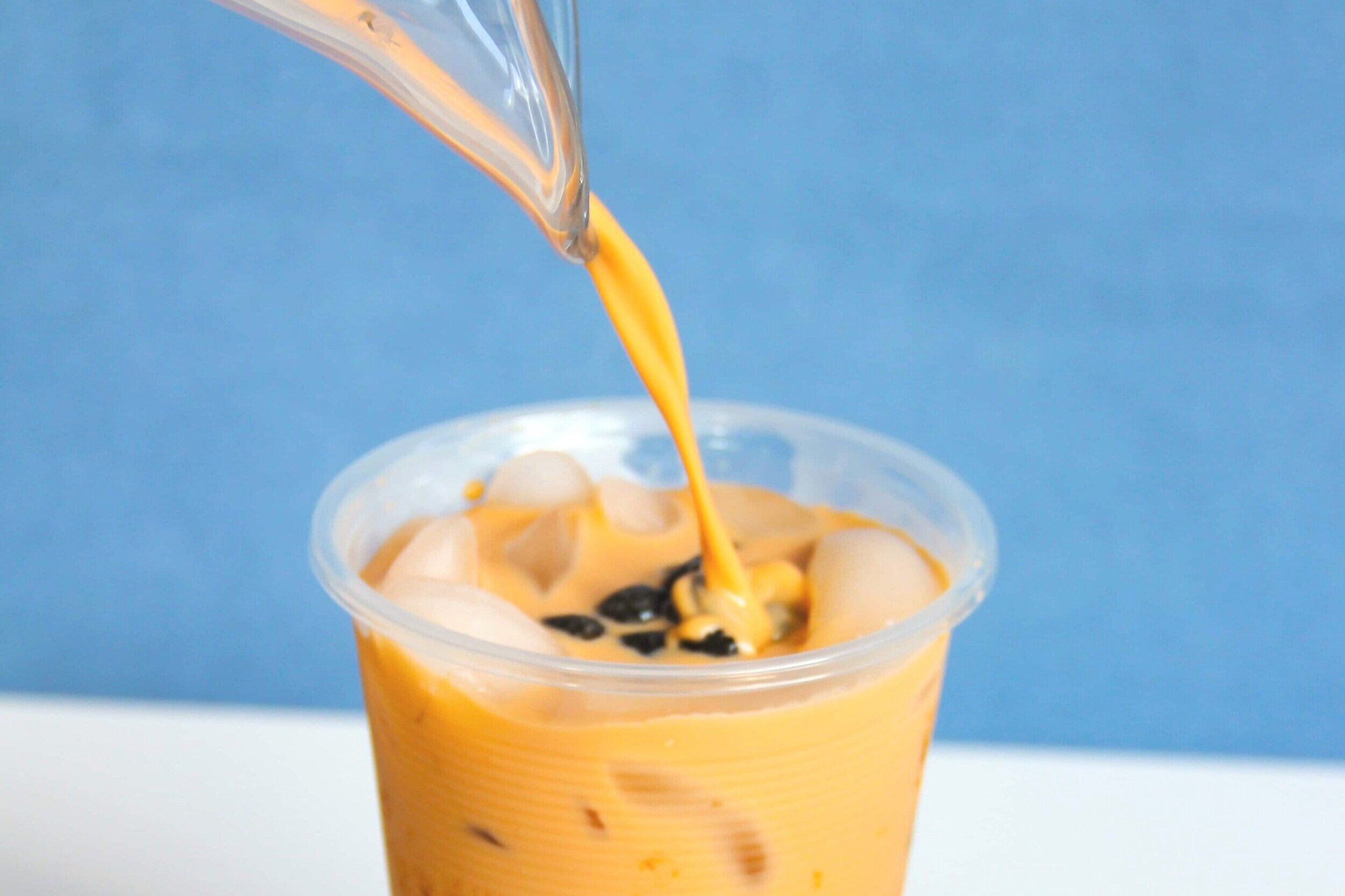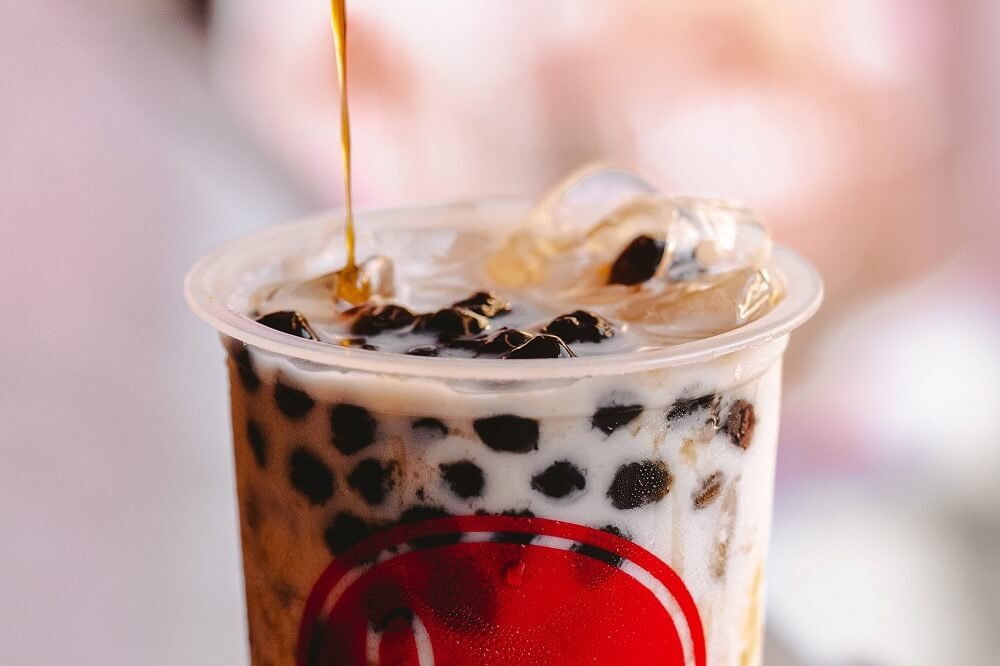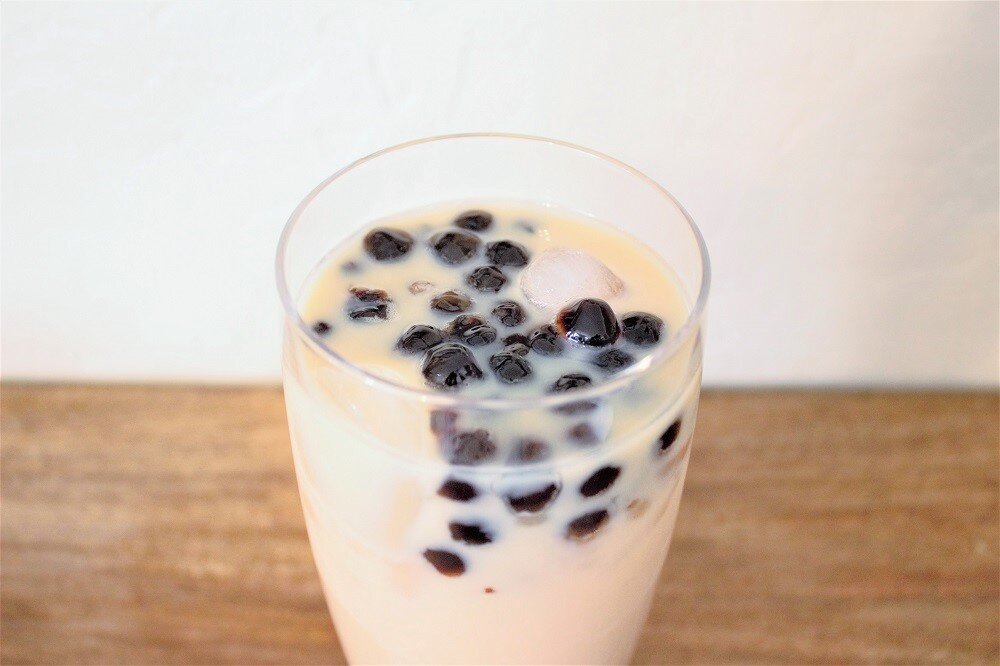Bubble tea health facts: Is boba bad for you?
This post contains affiliate links, which means Steeped Dreams earns a small commission if you purchase with these links or discount codes (at no cost to you). Please know all opinions in reviews on Steeped Dreams are genuine and not influenced by affiliate partnerships.
No matter if you call your drink boba or bubble tea, this delicious drink craze has gathered a cult following around the world. Yet while tea itself boasts an extensive list of health benefits ranging from antioxidants to heart health, boba’s nutrition is often deeply scrutinized.
Are trend haters gonna hate or is boba really bad for you? Let’s pick apart the nutrition facts of this beautiful squishy tapioca ball drink concoction.
Is boba bad for you?
While you can customize your boba tea the way you want, a standard milk tea with tapioca pearls can contain more sugar than a can of Coca-Cola [1]. And that’s just the sweet side.
Taking a deeper dive into boba tea’s nutrition, we can break it down by ingredients: tea, milk or creamer, and toppings. Once you consider the wider range of drink options like slushes and cheese foam tops, you open the door to a lot more dessert-like items.
To simplify things, let’s just take a look at the quintessential milk tea.
Boba calories
Bubble tea’s calorie count depends on how the boba pearls themselves are prepared (in honey or syrup), as well as the milk tea recipe. Comparing some national boba tea companies in the United States, I found that boba milk tea calories range from 430 to 616.
Note: Many boba shops allow you to adjust sweetness levels. The calorie counts used in these averages are from the menu at 100% sugar.
For reference, a 16 oz Starbucks matcha frappuccino right off the menu with whipped cream gets you 420 calories [2]. That delectable milk tea isn’t looking so innocent now.
Yikes.
| Reported boba milk tea calorie count at national boba shop chains in the US | |
|---|---|
| Company | Total Calories of milk tea with boba pearls (100% sugar) |
| Kung Fu Tea | 449 |
| ShareTea | 616 |
| Gong Cha | 430 |
According to Kung Fu tea, just a serving of boba pearls alone (no drink) is already 199 calories. And milk tea with no toppings at 0% sugar is 173 calories. In other words, even if you order a milk tea with boba and NO SUGAR, you’re still looking at a whopping 372 calories.
Negative health impacts of boba
Unfortunately, the dark side of boba extends beyond the sugar and calorie count. Like most sugar-sweetened beverages, overconsumption can also lead to many long-term health complications.
A study published in the Food Science & Nutrition journal explored the impact of bubble tea’s popularity in Asian-American communities [3]. It found that overconsumption of boba drinks likely contributes to “higher rates of overweight among Asian youth”, worsening the childhood obesity epidemic.
In addition, a case-control study showed an association between sugar-sweetened beverages like boba teas and ADHD [4]. However, causality was not proven, meaning that although there is a link, the sugary drinks may not be the direct cause of ADHD.
So, how else can bubble tea be bad for you? Here are a few other health facts to consider.
Milk or non-dairy creamers
Oftentimes, the milk added to milk teas is not dairy or real milk at all, but rather a non-dairy creamer. These creamers contain ingredients like glucose, vegetable fat, sodium caseinate, and dipotassium [5].
As explained by a Singaporean hospital, non-dairy creamer increases the fat and sugar content, in turn also increasing risk of chronic diseases [6]. For example, a common ingredient, hydrogenated palm oil, has shown a strong correlation with increasing the risk of heart disease and stroke.
Tapioca pearls
It’s easy to write off the boba itself as the healthier part of the milk tea. However, tapioca pearls greatly contribute to the overall sugar content and calorie count. While the balls are made of mostly tapioca starch, once cooked they are combined with sugary syrups.
Boba health myths debunked
Not all is doom and gloom about our favorite treat, however! Over the years, boba’s nutrition has undergone lots of scrutiny, resulting in false claims and a few debunked myths about how “bad” boba can be.
Myth #1: Tapioca pearls directly cause cancer
In 2012, a German study suggested that the tapioca pearls in boba may be linked with cancer [7]. It caused quite the stir around the world, leading to many putting their boba cravings to rest. However, after both the Consumer Protection Committee in Taiwan and U.S. Food and Drug Administration (FDA) looked into the matter, it was concluded that there was no health concern around cancer.
In addition to the media sensationalizing the whole story, it also turns out that the German study was not published in a peer-reviewed journal. In other words, this controversial study wasn’t assessed by experts in the field to verify accuracy prior to publication.
Myth #2: Boba can get stuck in your stomach
From a viral x-ray showing hundreds of undigested boba balls in a young girl’s stomach to suspected constipation, there have been worries around boba being indigestible and potentially dangerous.
Yet in an interview, Dr. Ryan Marino, an emergency medicine physician at UPMC in Pittsburgh, suspects that someone would have to drink a huge amount of boba milk tea to experience a problem [8]. He also believes that uncooked boba is much more likely to get stuck than cooked boba.
General boba nutrition facts
Tapioca pearls are made from tapioca starch from the cassava plant, which originally made its way to Taiwan from Brazil during Japanese occupation in the early 20th century [9]. You may have already heard about this root from its other name: yuca!
Cassava by itself is fat free, cholesterol free, and a source of fiber [10]. But, does that make bubble tea healthy? Not necessarily. It is carb-rich, so don’t have a bowl of boba for breakfast if you’re trying to watch your carb intake. It’s also important to note that a large amount of the cassava root’s nutrients are lost after processing [11].
As far as diets go, boba tapioca pearls are gluten-free, dairy-free, and vegan, making it an accessible treat to many with dietary restrictions [12]. The drinks themselves are typically made with non-dairy creamers or no creamers at all, so they’re also largely lactose-intolerant friendly.
Finally, tea is a known fantastic source of antioxidants and flavonols, which have cancer preventing properties and are beneficial for health, among other health benefits.
Does boba tea have caffeine?
While tapioca pearls are not caffeinated, the drink may be depending on what type of tea you choose. Teas derived from the camellia sinensis plant, including white, green, black, and oolong teas, are naturally caffeinated. Plenty of other delicious drink options like taro, black sesame, fruit juice, or Yakult are caffeine-free.
How can you make boba healthier?
So what happens if you’ve got an unshakable boba habit but a drive to be healthier? There are easy ways to modify your boba to be a bit more guilt-free.
Make boba at home: Buying your own tapioca pearls to make at home is not only heaps cheaper but gives you more control over how to prepare it. A pack I use at home is only 80 calories per ¼ cup (a solid serving). Instead of sugar syrups, I use a drizzle of honey to coat the boba. For the tea itself, you can steep a strong brew of your favorite loose leaf tea and add a splash of milk. That’s it! No artificial sweeteners or creamers needed.
Modify sugar levels: This one is a no-brainer, but it’s not easy to make the plunge into 0% sweet land! If you find that unsweetened bubble tea is much too bitter, try gradually cutting down on the sugar until you get used to the tea taste (and not the sugar). I love tea without any add-ins already, so this is always my go-to order.
Order without the creamer: Non-dairy creamers used in milk teas are high-fat and calorie-rich, often filled with glucose and vegetable fat. There are tons of deliciously wonderful boba tea flavors you can try that don’t use a creamer at all! You may even discover a new favorite menu option.
Try a different topping: Boba and cheese foam tops tend to have the highest calorie count on the topping menu. Instead, skip the topping altogether or spice things up with a lower calorie grass jelly or pudding.
Explore healthier boba shops: The problem with many mainstream tea shops is that drinks may be premixed to follow a strict brand menu, leaving no option to customize. One of my favorite boba shops in Phoenix uses real milk and handmade honey boba in its drinks. It also has non-dairy milk options like soy and almond if you want a lower fat option.
-
[1] Baker, Jalelah Abu. “Sweeter than Soda? The Hidden Sugars in Bubble Tea.” CNA, 29 Dec. 2020, www.channelnewsasia.com/news/singapore/bubble-tea-sugar-content-sweeter-than-coke-soda-11063316.
[2] “Matcha Crème Frappuccino® Blended Beverage.” Starbucks Coffee Company, www.starbucks.com/menu/product/439/iced?parent=%2Fdrinks%2Ffrappuccino-blended-beverages%2Fcreme-frappuccino.
[3] Min, Jae Eun, et al. “Calories and Sugars in Boba Milk Tea: Implications for Obesity Risk in Asian Pacific Islanders.” Food Science & Nutrition, vol. 5, no. 1, 2016, pp. 38–45., doi:10.1002/fsn3.362.
[4] Yu CJ;Du JC;Chiou HC;Feng CC;Chung MY;Yang W;Chen YS;Chien LC;Hwang B;Chen ML; “Sugar-Sweetened Beverage Consumption Is Adversely Associated with Childhood Attention Deficit/Hyperactivity Disorder.” International Journal of Environmental Research and Public Health, U.S. National Library of Medicine, 4 July 2016, pubmed.ncbi.nlm.nih.gov/27384573/.
[5] “Nutrition Information - Kung Fu Tea: Fresh - Innovative - Fearless Leading Tea Brand.” Kung Fu Tea | Fresh - Innovative - Fearless Leading Tea Brand, www.kungfutea.com/nutrition/.
[6] “What's in My Bubble Tea?” Mount Alvernia Hospital Singapore, 23 Jan. 2020, mtalvernia.sg/education/whats-in-my-bubble-tea/.
[7] Lam, Keng. “Be Well: Tapioca Pearl Problems.” @Berkeleywellness, www.berkeleywellness.com/healthy-eating/food-safety/article/tapioca-pearl-problems.
[8] Holohan, Meghan. “Can Too Much Bubble Tea Make You Constipated?” TODAY.com, 12 June 2019, www.today.com/health/bubble-tea-bad-your-stomach-doctors-weigh-t156195.
[9] Nguyen-Okwu, Leslie. “Boba Explained: A Taxonomy of Taipei's Bubble Tea.” Eater, Eater, 16 Mar. 2019, www.eater.com/21551108/boba-milk-bubble-tea-explained-how-to-order.
[10] “Yuca - Cassava - Tropical Vegetables and Peas: Goya Foods.” Tropical Vegetables and Peas | Goya Foods, www.goya.com/en/products/yuca-frozen.
[11] Montagnac, Julie A., et al. “Nutritional Value of Cassava for Use as a Staple Food and Recent Advances for Improvement.” Comprehensive Reviews in Food Science and Food Safety, vol. 8, no. 3, 2009, pp. 181–194., doi:10.1111/j.1541-4337.2009.00077.x.
[12] “Gluten-Free Foods.” Celiac Disease Foundation, celiac.org/gluten-free-living/gluten-free-foods/.








![[Spotlight] Handmade boba plant pot entrepreneurial duo](https://images.squarespace-cdn.com/content/v1/6008e4b84dfdb80938cd0442/0bfd5258-a9b8-4f99-8d30-85218ac54c41/boba+tea+pot+eighty+degree+mag.jpg)

